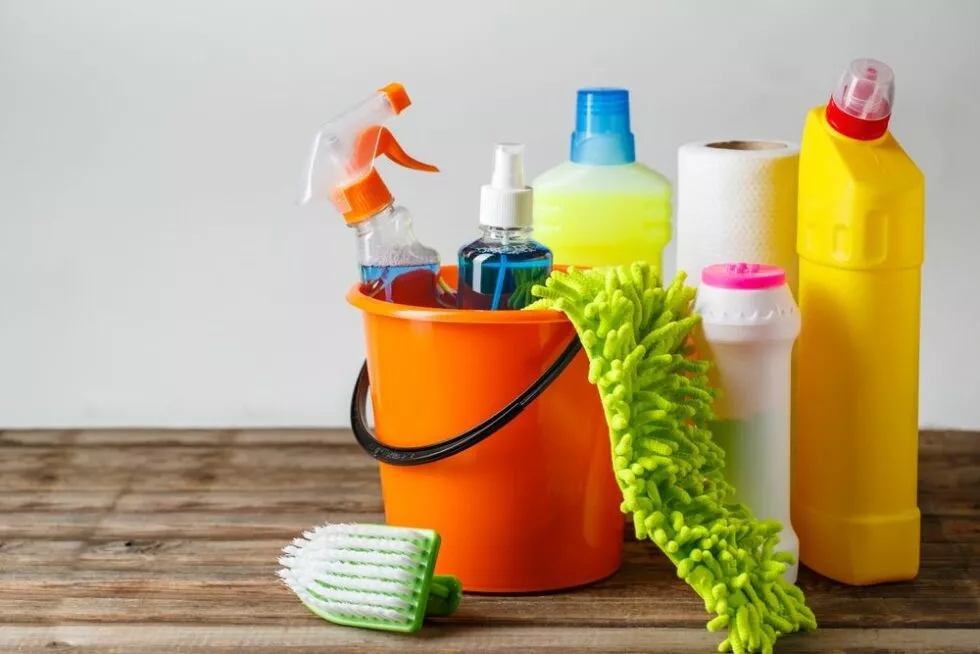Phyto-purification & household products: what precautions should be taken?

Protecting the environment: the importance of biodegradable household products
Choosing a planted filter sanitation system is a wise decision for the sustainable management of domestic wastewater. However, this ecological option often raises questions about the precautions to be taken in everyday life. The answer is both simple and surprising for some: your habits do not need to change even if we can only encourage the use of ecological household products.
The use of biodegradable household products is strongly recommended. Why? Because these products are designed to decompose quickly and effectively under the action of bacteria naturally present in the environment. Unlike traditional chemicals, which can persist and harm local flora and fauna, biodegradable products minimise ecological impact. By choosing environmentally friendly solutions for cleaning your home, you not only contribute to protecting the environment, but also ensure the longevity and efficiency of your sanitation system.
Planted filters, often populated by reeds, are particularly suitable for this type of wastewater management. These plants play a key role in the treatment process, as they promote the breakdown of organic substances and limit the spread of pollutants. When you use biodegradable products, the reeds and other plants in the filtration system can better fulfil their purification role. This ensures that potentially harmful substances are effectively treated before being released into the environment, thus reducing the risk of soil and water contamination.
In short, by using biodegradable household products, you are making a practical and positive gesture for the environment. You are participating in the preservation of natural resources and contributing to maintaining the fragile balance of ecosystems. Moreover, by ensuring the good health of your sanitation system, you avoid future repair costs, while benefiting from a system that respects and protects our planet. It is a choice that benefits everyone, today and for generations to come.
Balancing hygiene and ecology
It is important to recognise that occasional and moderate use of some conventional household products is not completely excluded. Disinfectants such as bleach can be used occasionally, especially when stricter hygiene measures are necessary. Bleach, for example, is a powerful disinfectant that can be effective in certain situations, although it should only be used in exceptional circumstances to limit its impact on the environment.
On the other hand, it is advisable to be particularly careful with more aggressive household products, such as drain cleaners. These products are often composed of very powerful chemical substances that can have harmful effects on the fauna and flora, and even on the sanitation infrastructures themselves. Their use should be avoided as much as possible to prevent these undesirable effects.
If the use of these aggressive products is really necessary, it is important to use them in very small quantities. This minimises their impact while meeting the specific needs of the moment. For example, in the case of a blocked pipe, there are often gentler and more natural alternatives, such as the use of baking soda and vinegar which can be just as effective without compromising the health of the environment.
Phyto-purification versus cleaning products
Phyto-purification is relatively robust compared to other sanitation systems. All sanitation systems, including planted filters, are sensitive to the chemical substances contained in certain household products. These systems depend on bacteria for the biological treatment of wastewater, and these bacteria can be directly affected by chemical products. However, a major advantage of planted filters is their microbial diversity. This characteristic makes them less vulnerable to disturbances.
The planted filters function according to the purification principles of natural wetlands. These varied ecosystems offer a mosaic of environmental conditions, such as well-oxygenated areas around plant roots and more anoxic areas elsewhere. This diversity of conditions favours the development of heterogeneous bacterial communities which work together to purify the water. In the event of chemical disturbance, the most sensitive bacteria may disappear but the ecosystem as a whole is resilient. This resilience means it can quickly return to a state of equilibrium after a disturbance, as long as the chemical is not too persistent.
The wastewater from the house arrives on the surface of the reed planted filter. The role of the reeds is mainly mechanical: the development of the stems and rhizomes maintains the permeability of the filter over the long term and the roots as a whole are home to an ecosystem that is very rich in bacteria and other micro-organisms. The reed filter is divided into two parts that are fed alternately. The upper layer of the filter is made up of sand which acts as a sieve, retaining the solid matter on the surface of the filter. This matter will quickly compost while the water passes vertically through the entire filtering bed. The bacteria present in the filtering bed digest the pollution and the water continues on its way to the infiltration zone.
However, certain products, such as pesticides, must be strictly avoided. Their persistence over several years can seriously compromise the bacteria in the planted filters and disrupt the functioning of the phyto-purification in the long term.
In short, phyto-purification is highly resistant to the use of common household products. However, caution is advised when using products that are aggressive and toxic to planted filters and the ecosystem as a whole. Let’s take care of our garden and our precious planet!

